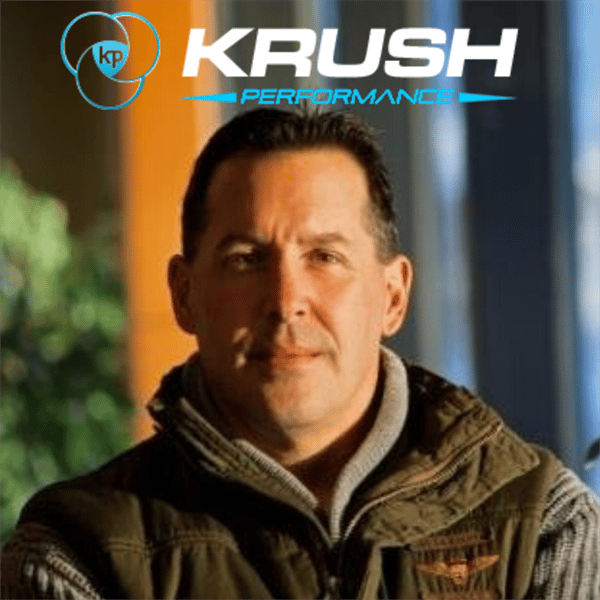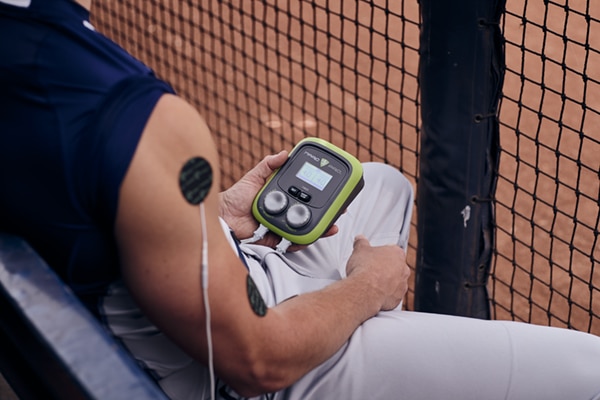Strength and Conditioning Coach Interview | Jeff Krushell

Jeff Krushell is a Certified Strength and Conditioning Specialist (CSCS) working with professional sport organizations in baseball, football, NHL, elite developmental programs, and Olympic athletes and agents. Krushell has worked developmental magic in the trenches of athlete and organizational performance. His contribution to numerous national Olympic committees and global game development with the MLB International program has been invaluable, helping support organizations across Europe, Africa, Canada, United States, and New Zealand.
Jeff is the founder of Krush Performance where he shares his passion and philosophy for talent development and clean sport in his podcast and blog. Parents, coaches, athletes, and organizations can be inspired and motivated with the plethora of hot topics & solutions to performance, mental training, nutrition, coaching tools, and the ‘Krush War on Sugar’. Jeff’s message relates to all levels of human performance and is not exclusive to sport.
What initially attracted you to strength and conditioning?
I have always been involved in sports. I was good at a lot of sports, but wouldn’t say that I was great at any one sport. There was a defining moment for me that changed my career trajectory. I was working in the varsity weight room at the University of Calgary. In this weight room, there were all levels of athletes, from college players to Olympians.
One of the Olympic bobsled teams requested boxes made that were 5 feet tall. 5 feet! We made the boxes and watched these athletes jump onto these boxes with the ease and grace of a ballerina.
After seeing this amazing athletic feat, the next day, I changed my classes to focus on human physiology. I have been on this path ever since then.
Could you share more about the athletes you currently work with?
I work with so many different athletes. My time with the Toronto Blue Jays was incredible, it was such a great time to be working in that sport, strength and conditioning was starting to catch hold and I loved being on the cutting edge helping to push the entire organization forward. Pro sports is a very busy and demanding lifestyle, but when you have a group of people committed to working towards the same goal, well there is nothing quite like it.
On the global development side, I was invited to travel to Italy with Major League Baseball for a training camp with the top young baseball players ages 15 to 21. I quickly understood the international game of player and athlete development and the need for education and proper developmental strategies in regions all over the globe. I fell in love with this part of sport and I am now in my thirteenth year working internationally with Major League Baseball.
I have also been lucky to have worked with Olympic sports, from swimming to figure skating, and everything in between. I found that working at the professional level was an incredible experience, especially when you have to continually challenge the best athletes to keep getting better.
What are some of the major issues in sports development today?
The evolution of early specialization is one of the biggest challenges we face and one of the worst things to happen in sports. There has been this heavy push for kids to specialize in one specific sport early and we may very well be destroying more talent than we are creating. Parents and coaches need to understand the pitfalls of this specialization, especially during critical development ages 9 to 15. Injuries that we are seeing even at the professional level start when athletes are young and developing.
You believe “Good is the problem and great is the goal.” Could you explain this further?
Athletes at all levels get content. We underestimate how much we can push ourselves. When we get good, anything beyond good becomes uncomfortable. People have big dreams and aspirations, but when we get to the point where things get difficult, well people often have a tough time stepping over that safety line, getting out of their comfort zone. It’s a tough place to be, you get exposed there and that can be very difficult for people.
You need to be willing to step over that line to truly find out what it takes to be great.
There is so much untapped potential out there. Fear of failure, fear of looking bad, fear of criticism, athletes must surround themselves with good people and a great environment to truly be their best. Unfortunately, great developmental and performance environments are rare. Trust environments where effort is praised and failure is accepted, even encouraged, as part of the process of achieving top performance.
What defines a great performance environment?
One of the key factors of a quality performance environment is understanding the long-game of development. While you need to encourage athletes to step over the line and fail in order to improve, you must also have clear and concise goals and objectives coupled with well-defined expectations and accountability. Athlete development is a long game and there are absolutely no shortcuts.
We are kind of at a ceiling when it comes to the physical side development. Faster, higher, stronger, no problem, we know this stuff. Talent development and the acquisition of – done, we have this covered. The real challenge is to see the long-game and to make sure that the training you are doing now (at your age and level of development) is correct and building on where you need to be in the future – sometimes looking months or even years ahead.

I believe the next two areas that will push human performance forward are the advancements in technology and our ability to better understand and train the mind. Technology in equipment and clothing for sure, but also technology that is allowing us to map and train the mind in real time and technology that is allowing us to monitor and track athlete performance, levels of readiness, and the technology that will help us maximize recovery, like the Marc Pro.
What shifts have you seen in strength and conditioning throughout the years?
One of the biggest shifts in the industry, is the coordination and collaboration between coaches and strength and conditioning teams. We are now starting to see the integrated, multi-sport teams coming together for the common good of the athlete.
We are constantly looking for better methods and strategies to apply to our craft and it has resulted in some major changes like the shift away from static stretching and how we use ice in injury management. Coaches need to be open and always looking for new information. We cannot ignore recent data about the effects of icing and in-turn, we have to look at shifting how we are thinking about icing. The current data tells us that icing is not as conducive, as we once thought, for injury management.
What is the most difficult aspect about being a strength & conditioning coach?
Keeping it fun is the most difficult part. When you get into the high-performance world of sport, the daily grind of training can be tedious. It is a big win when athletes are excited to come and train and compete and keeping it fun is a big, big part of that.
What advice would you give athletes about recovery?
We have four key priorities for our athletes and organizations:
- Rest, Recovery & Recuperation. SLEEP is KING Here!
- Nutrition & Hydration
- Posture and Range of Motion
- Movement
All of our programs are built around rest, recovery and sleep!
Injury rates are at an all-time high. Athletes are over-training, over-competing, and under-recovering. More is not better and there is a massive opportunity for athletes who are training more strategically, and probably doing less, to accomplish more.
How do your workouts for your athletes change in-season versus off-season?
Workouts are dependent on the sport, athlete, and what we need to work on.
The number one goal during season is injury prevention. We are always looking for ways to support the athletes and get better, but in-season, injury prevention is our main focus.
During the off-season, we have more freedom to attack things that we can’t do during the season. But we are always looking ahead to the long-term plan. We are asking, “What do we need to look like at the end of the next competitive season?” We then implement our strategies based on that long-term game.
What is your favorite part about working with athletes on a daily basis?
I enjoy the management side and helping athletes understand the long-game. It is important to share with athletes that doing less, leads to more. Couple that thinking with strategic planning, and you can have amazing results.
Athletes have been so programmed to be busy and more often than not overly busy. It can be difficult for athletes to understand that less is more and recovery is king. But when athletes get comfortable with that, amazing things can happen.
You may also be interested in: